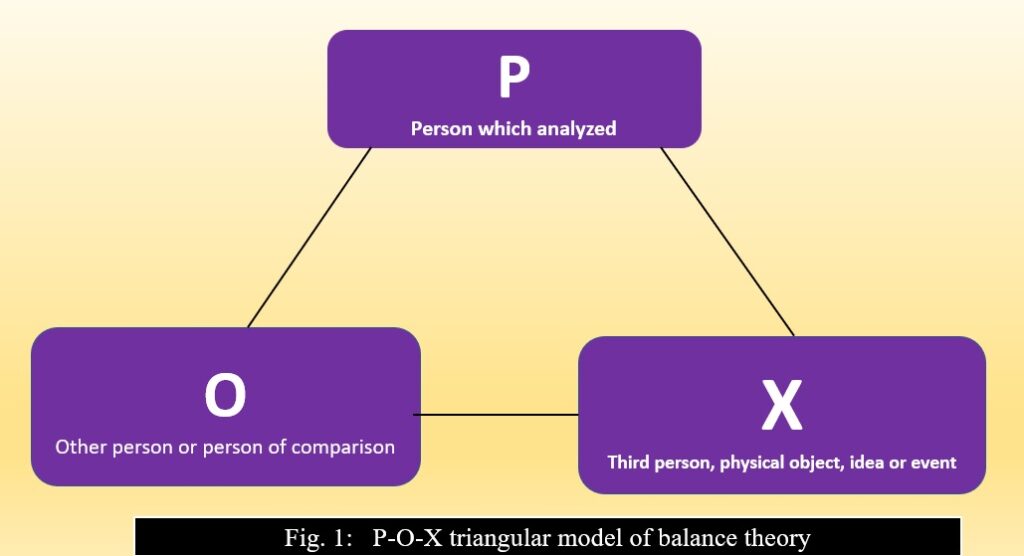Theories of Attitude Formation
Introduction to Attitude
Attitude is a way of thinking about an object, person, event, or situation. There are two sides of the attitude people carry; one is positive and another is a negative attitude. A positive attitude enables an individual to think positively which is favourable and expected whereas a negative attitude makes an individual think of unfavourable or undesired situations or results.
Positive attitudes and negative attitudes are depending upon the way people perceive the environment. The attitude comes with building skills and character. It does not come with birth. The expected personality builds through behaviour. Attitudes are influenced by perception. In this way, the attitude formation is done
Components of an attitude
Attitude compose of three key components; cognitive, affective, and behavioral components
Cognitive Component: Beliefs, knowledge, or information. these elements of attitude are common. Generally, an individual has knowledge or mindset about the object.
Example:
All babies are innocent and cute, smoking is injurious to health, ice is very cold, and drinking alcohol is harmful to health.
These are some examples that indicate how common the information or knowledge about an object is. From the above example, it can easily understood as the belief or information about an object creates an attitude towards it. Such as small babies are innocent is the belief then everyone has an attitude toward a baby being the same and no one considers the baby as guilty.
Affective Component:
It belongs to a feeling an individual has due to the cognitive component. There is a relationship between cognitive and affective components. The affective component is the feeling ch caused by belief or information about an object.
Example:
“Smoking is injurious to health” is a common belief of people. So, people avoid smoking and they feel very bad about smoking. Snake is very dangerous is a common belief that causes people to feel fear of snakes.

Behavioral component: it is concerned with the action taken by an individual based on cognitive and affective components. The behaviour of people is formed by an attitude that comes with thinking and feeling. Perception is responsible for specific behaviour.
Example:
Snake is deadly so people avoid going near the snake. Smoking is injurious to health so many people avoid to take smoking. Small babies are innocent so people can not consider small babies guilty.
Theories of attitude formation
Cognitive consistency theory
People always strive to reconcile divergent attitudes and align their attitudes and behaviour in order be rational. Every individual is expected to have a specific personality. Inconsistencies and an unstable state of mentality create disturbance in perception and to behave confidently. To make a stable state an individual always strives to make an equilibrium state. The equilibrium state is concerned with a specific attitude that leads to specific behaviour.
Example
Datta is a person who takes alcohol for many years due to his cognitive part of attitude. His belief was wrong about drinking alcohol. One day he visits the hospital with his friend. He discussed with the doctor the bad effects of drinking. The doctor informed me how drinking is harmful to health.
Datta was confused with the new information provided by the doctor. He compares his attitude with the knowledge he has and the information told by the doctor. He tries to decide and reduce the confusion. He tries to make an equivalence between the new information and his belief. He realizes that his belief was wrong and he tries to reduce drinking to avoid harmful effects on his health.
Some other theories that belong to cognitive consistency theory are
A. Balance Theory
B. Congruity Theory
C. Affective Cognitive Consistency Theory
D. Cognitive Dissonance Theory
A Balance Theory
Balanced theory found by social psychologist Fritz Heider in 1946. Originally this theory established the Pattern of interpersonal behaviour but it can also applicable to attitude theory. It can easily describe cognitive consistency.
This theory describes how an individual handles the inconsistencies and tries to bring an equilibrium state. The behaviour of an individual is framed in three elements of triangle according to Heider. Following is the triangle where P-O-X are the corners
P – A person which analysed
O – other person or the person for comparison
X – third person, physical object, idea, and or event.

Fig. 1) P-O-X triangular model of balance theory
Example
Nagesh and Datta are two friends. We assume that Nagesh is a person which we analyse. Datta brought two tickets to watch the cinema. But Nagesh does not like the movie for which Datta brought the tickets. In this situation, the person is Nagesh, another person is Datta and the third object is a movie.
Nagesh desires to make an equilibrium state to satisfy himself. He has two options, whether to ask Datta for another movie other-wise watch the movie for which Datta brought the tickets.
B. Congruity Theory:
This theory found by C E Osgood and PH Tannenbaum. Congruity theory establishes congruence between two objects if there is association. It focuses on the evaluation between the sources and mindset or concept which are linked by associative and dissociative assertion.
Example
Men are always considered as dominant in a leadership role than women, although women are more advanced in a leadership roles. The majority of people are congruent with this mindset in their roles and attitude. In an interview to select a manager, the interviewer always considers men as influencers in leadership than women. According to that mindset, the interviewer selects the candidates. Sometimes the interviewer changes his/her attitude due to strong positive factors in women.
A student’s assumption is good for two teachers. One day one teacher says to a student about the negative factors of another teacher. It creates dissociative assertions between two teachers. This will result in a bad image of both teachers in the mind of a student.
C. Affective Cognitive Consistency Theory
This theory has developed by M. J. Rosenberg. It describes the impact on a person’s mind due to a change in attitude. It consists of Cognitive structures (recognition, memorization) and Affective components (feelings or emotions about objects) which are altered according to the change in attitudes. It focuses on the relationship between cognitive factors and affective factors when attitude changed.
D. Cognitive Dissonance Theory
Cognitive dissonance is concerned with a mismatch between the person’s attitude and behaviour.
Everyone faces dissonance in attitude. No one avoids the dissonance completely. Dissonance can create mental pressure which affects the person’s personality and decision-making.
2. Functional Theory
belief and attitude are the significant factors that influence psychological functions. Simply the functional theory states the relationship of attitudes and efforts with the motivational structure of behaviour. The functional theory focused on three processes of attitudes and change.
Compliance: It concerns an attitude adopted for a specific group or situation. It is a temporary attitude adopted for a specific aim. For example, employees behave sincerely with the boss. Their attitude is different when they are with the boss.
Identification: This factor is concerned with adopting an attitude toward making good relationships. For example, a baby behaves nicely with parents to have good treatment from parents. Students in schools behave politely with their friends to make good relationships.
Internalization: it belongs to adopting an attitude that matches or is congruent with own value system. For example, students who strive for competitive exams always adopt an attitude that helps them to achieve their objectives.
3. Social Judgement Theory
Social judgment theory developed in the year 1961 by Muzafer Sherif, Carolyn Sherif, and Carl Hovland Muzafer Sherif, Carolyn Sherif, Carl Hovland. This theory enables an individual to select the massage or statement based on his/her cognitive map or information or knowledge or belief or mindset.
Examples of social judgment theory
Read the following statements and recognize the variety of opinions that represent the judgment.
- The students who is working part time job is required to provide extra time for the exam.
- Some students who are part-time employees need extra time for the exam. But it is not possible.
- Students who are part-time employees are less intelligent than regular students.
- Professors should assist such students and provide more time to teach them.
Selecting the right statement based on your attitude and which is mostly close to your opinion. Social judgment theory enables individual attitude to judge the statement or massage which closely represents your opinion.

